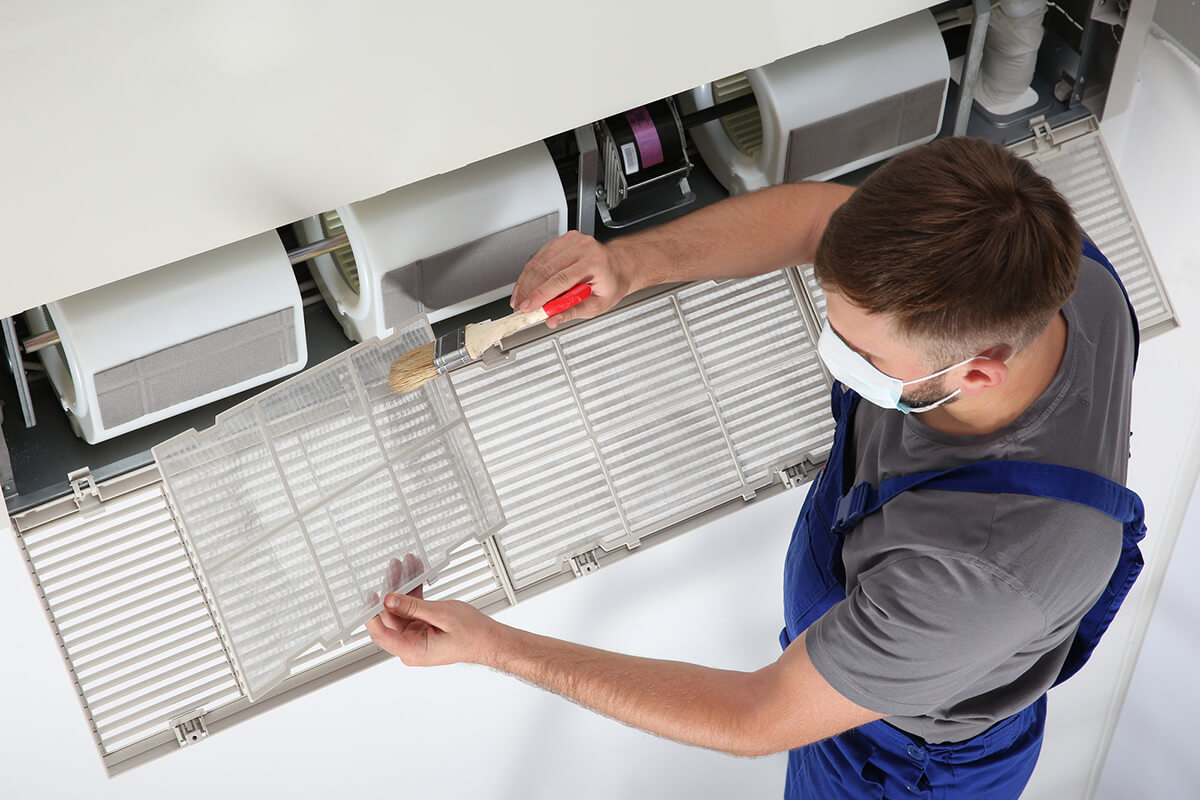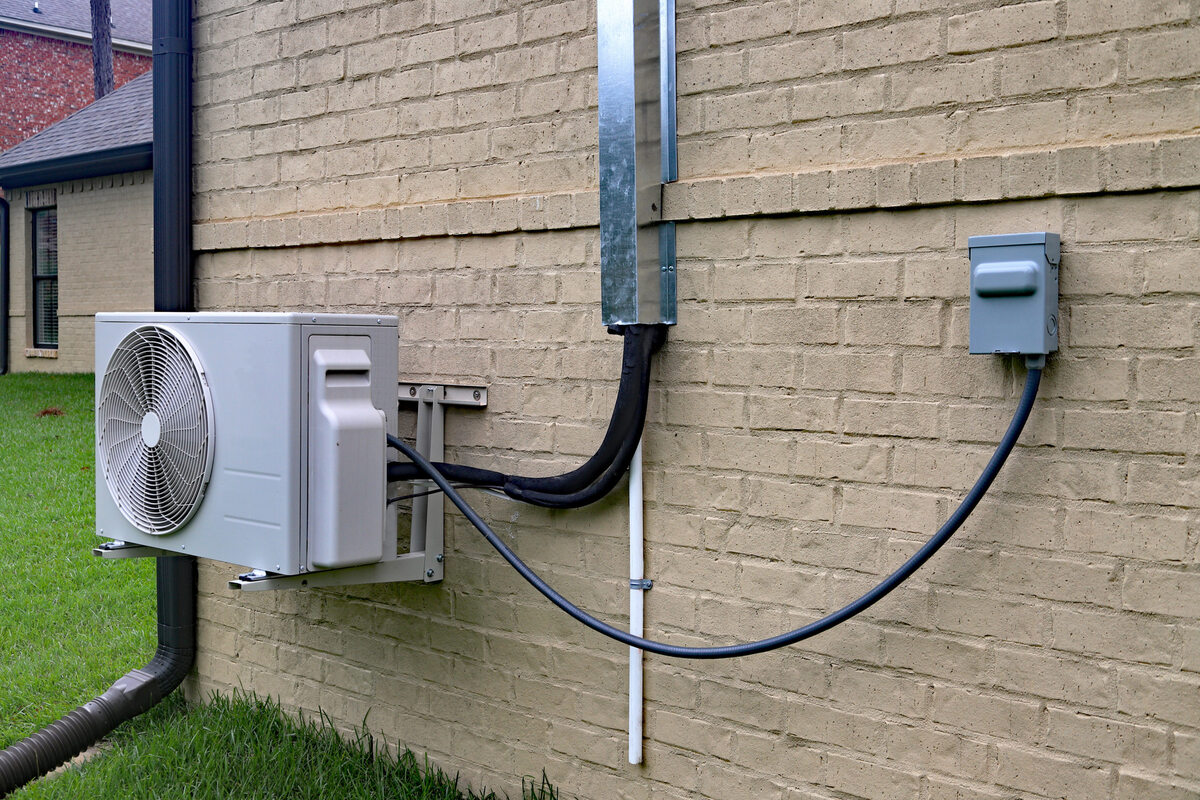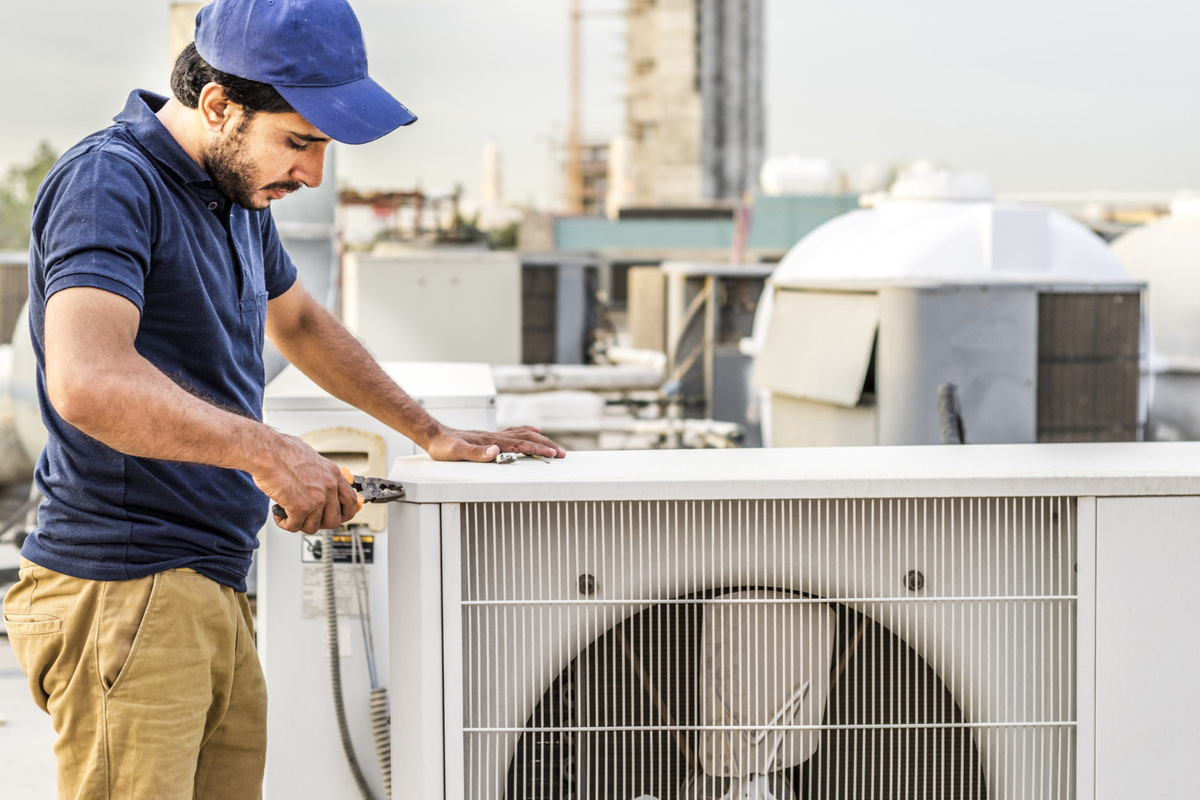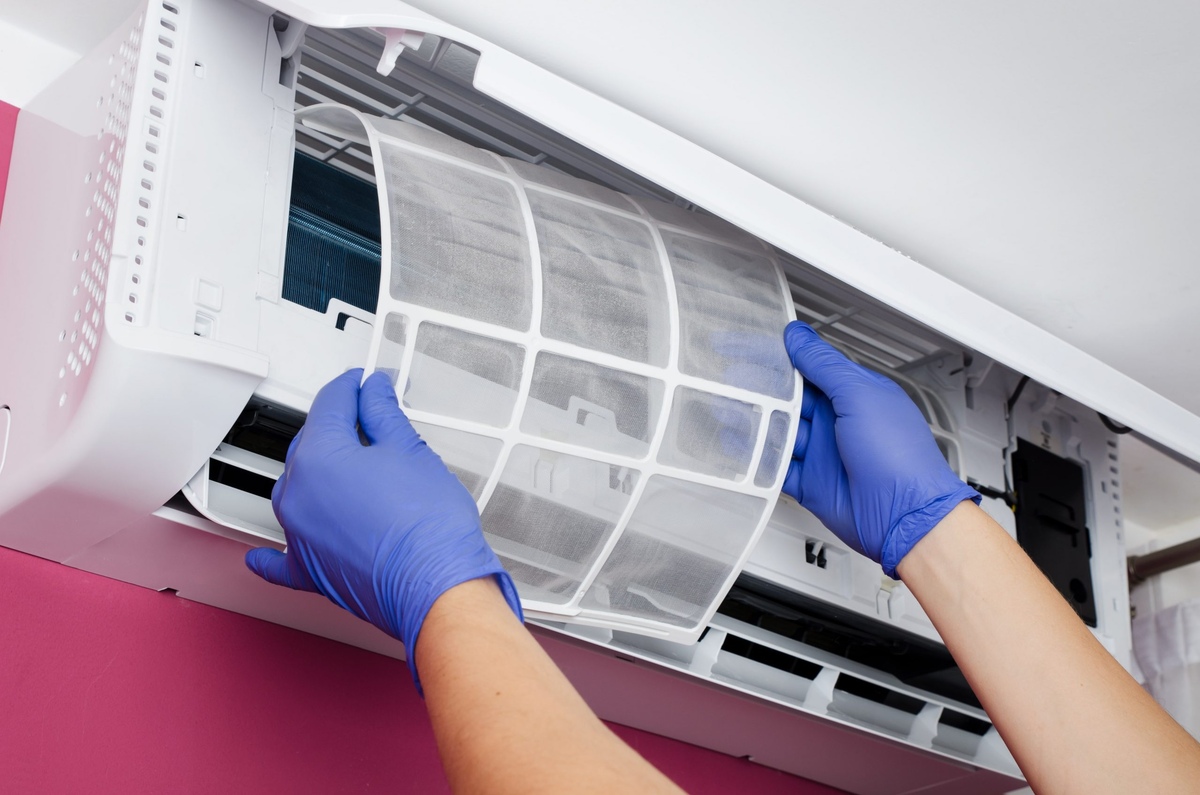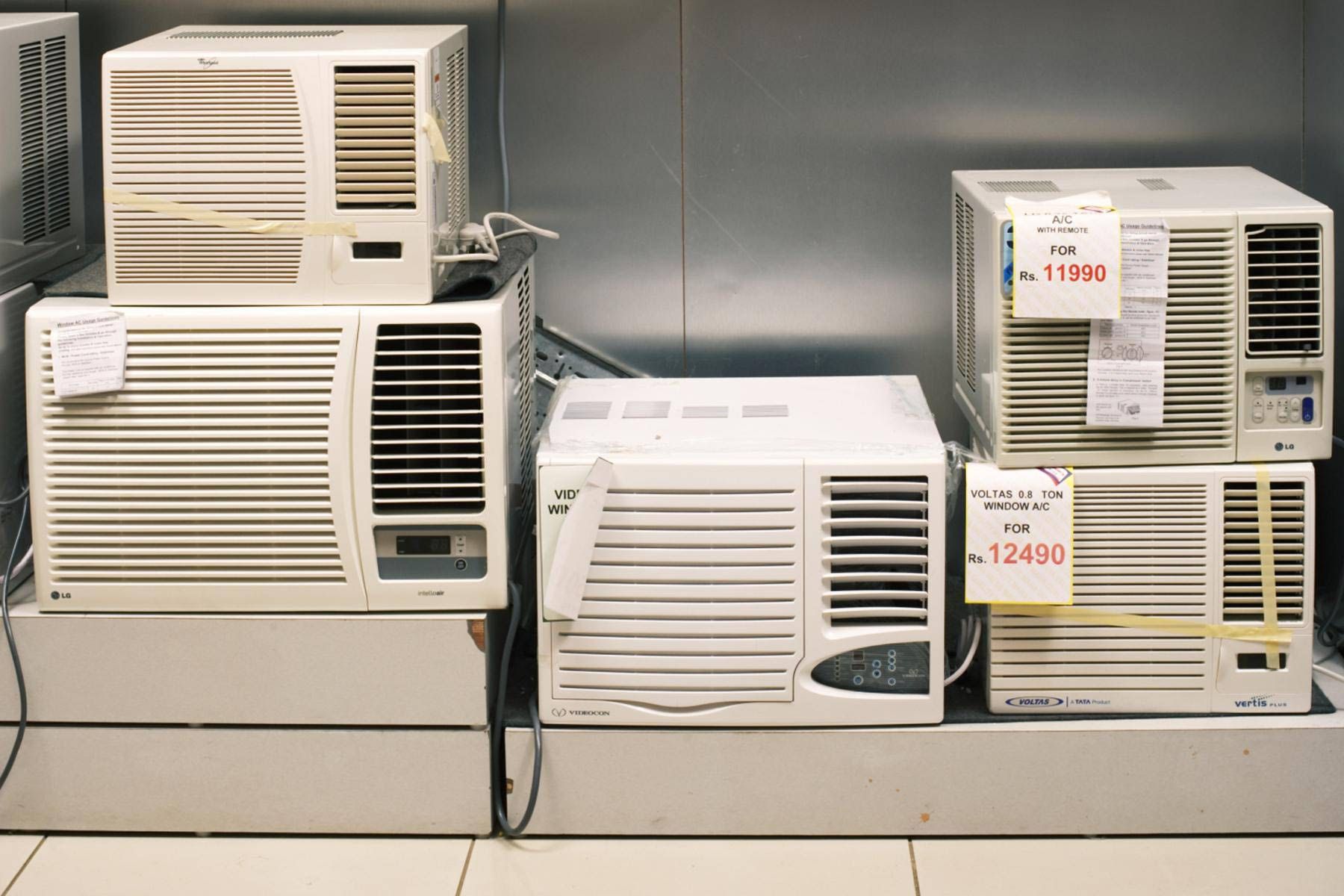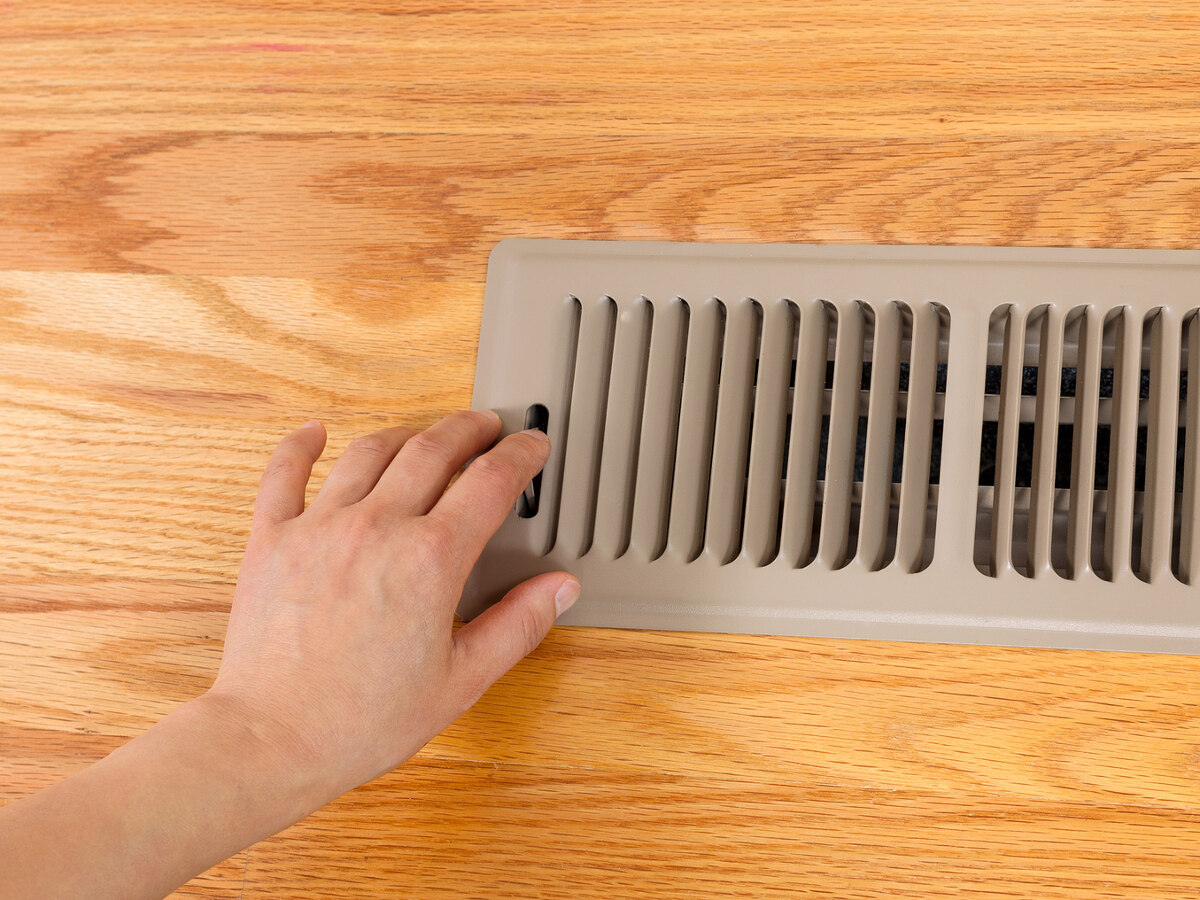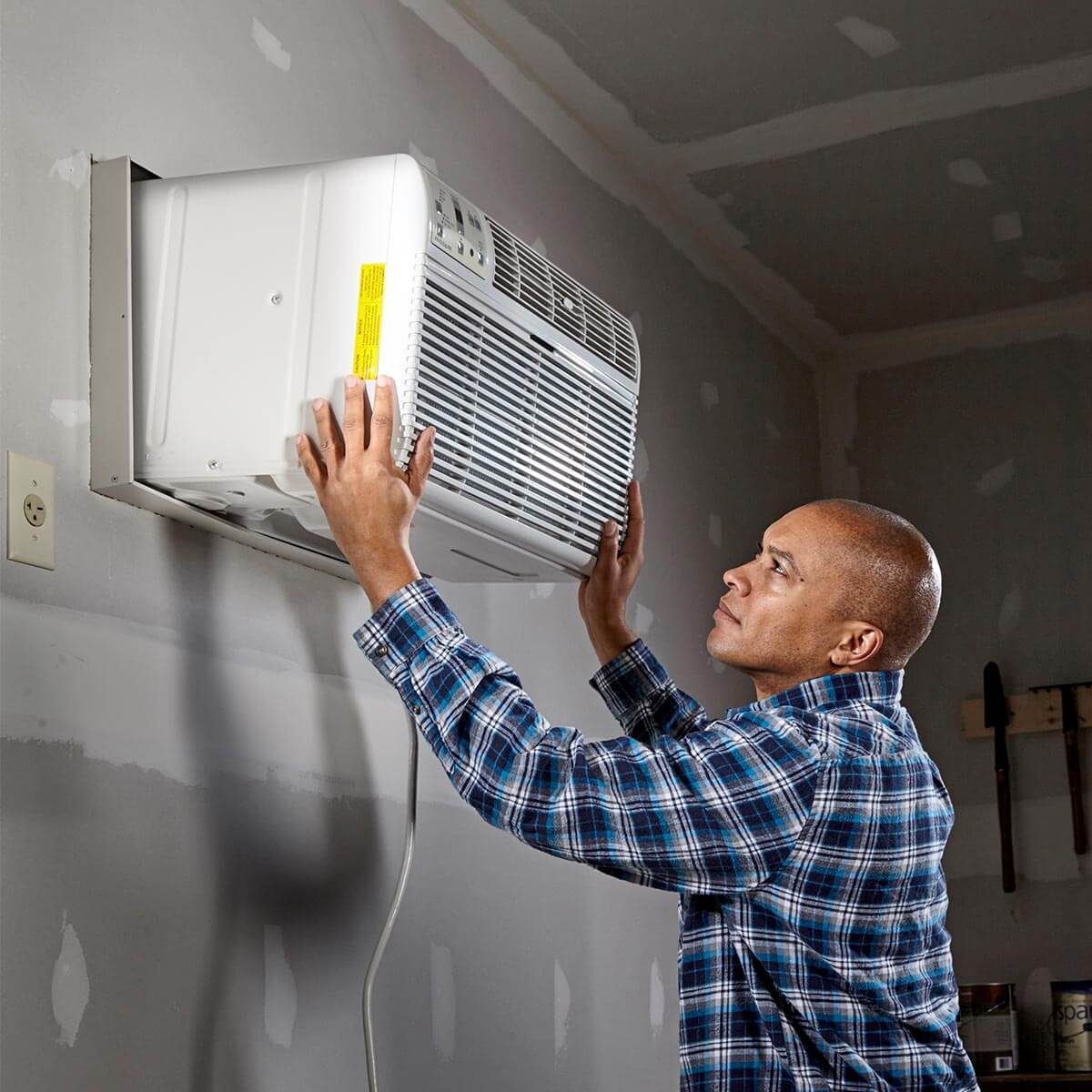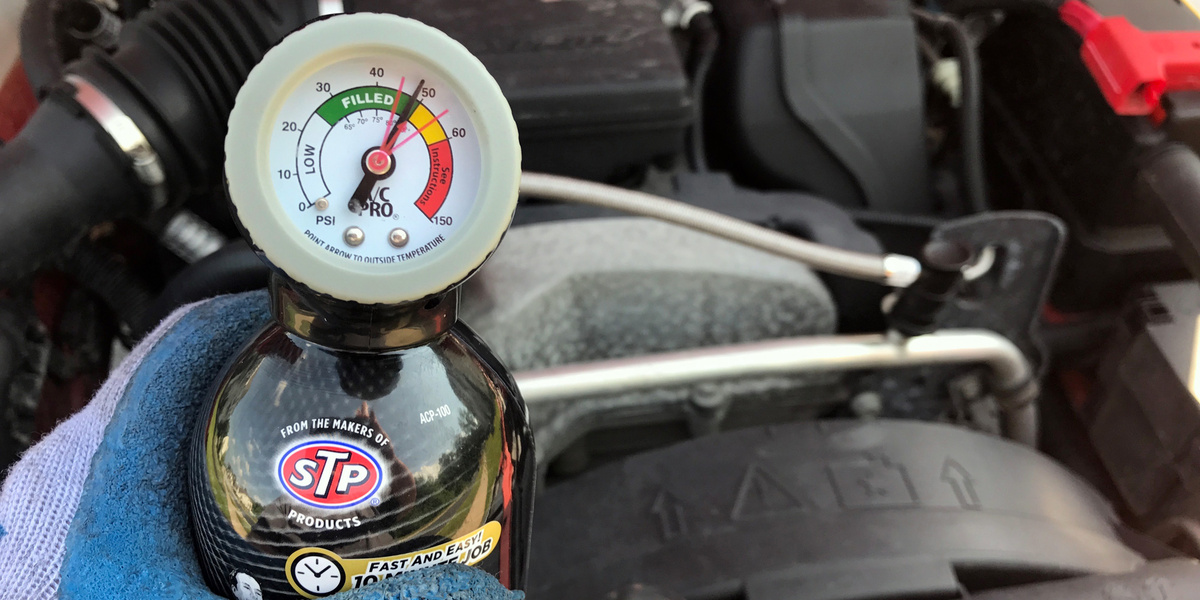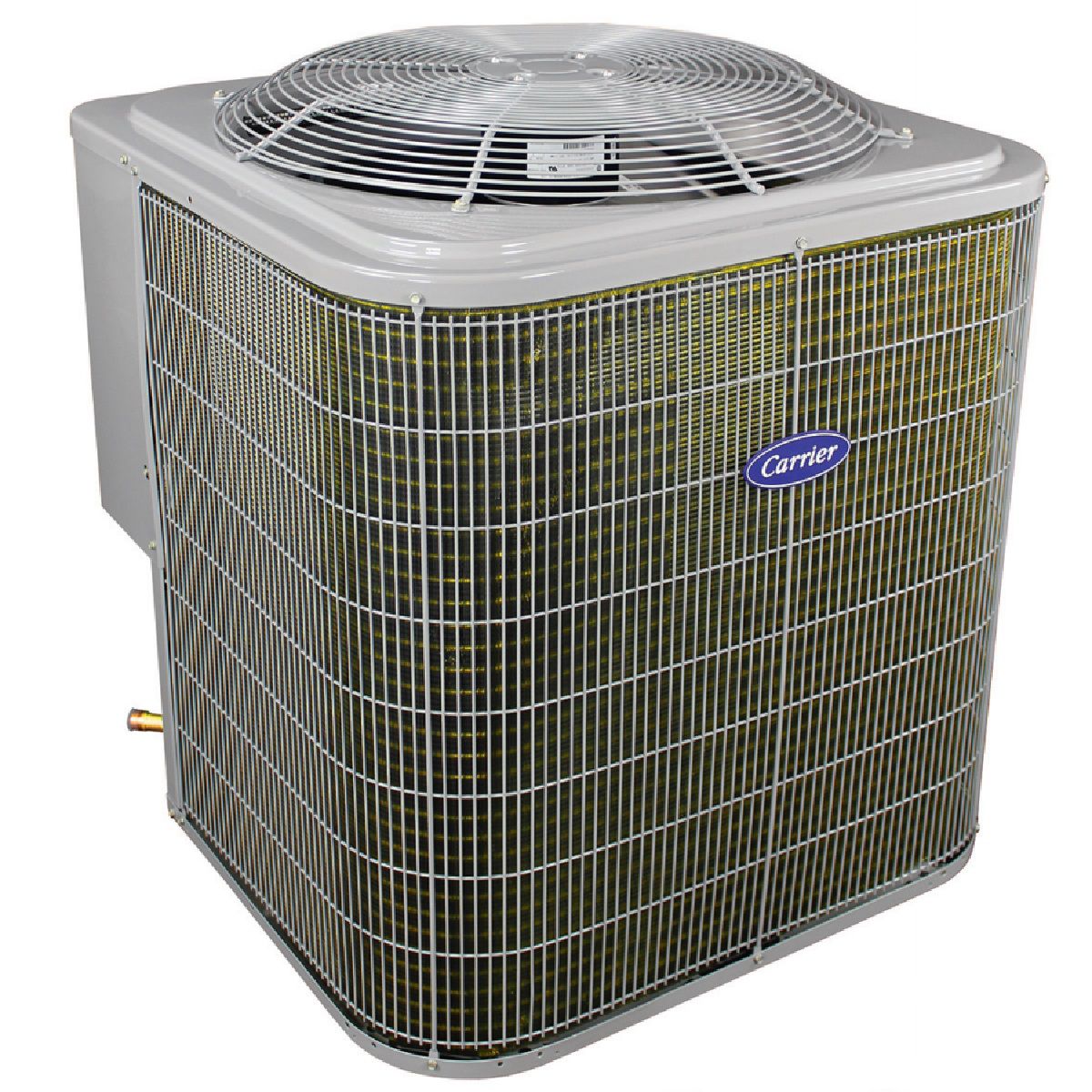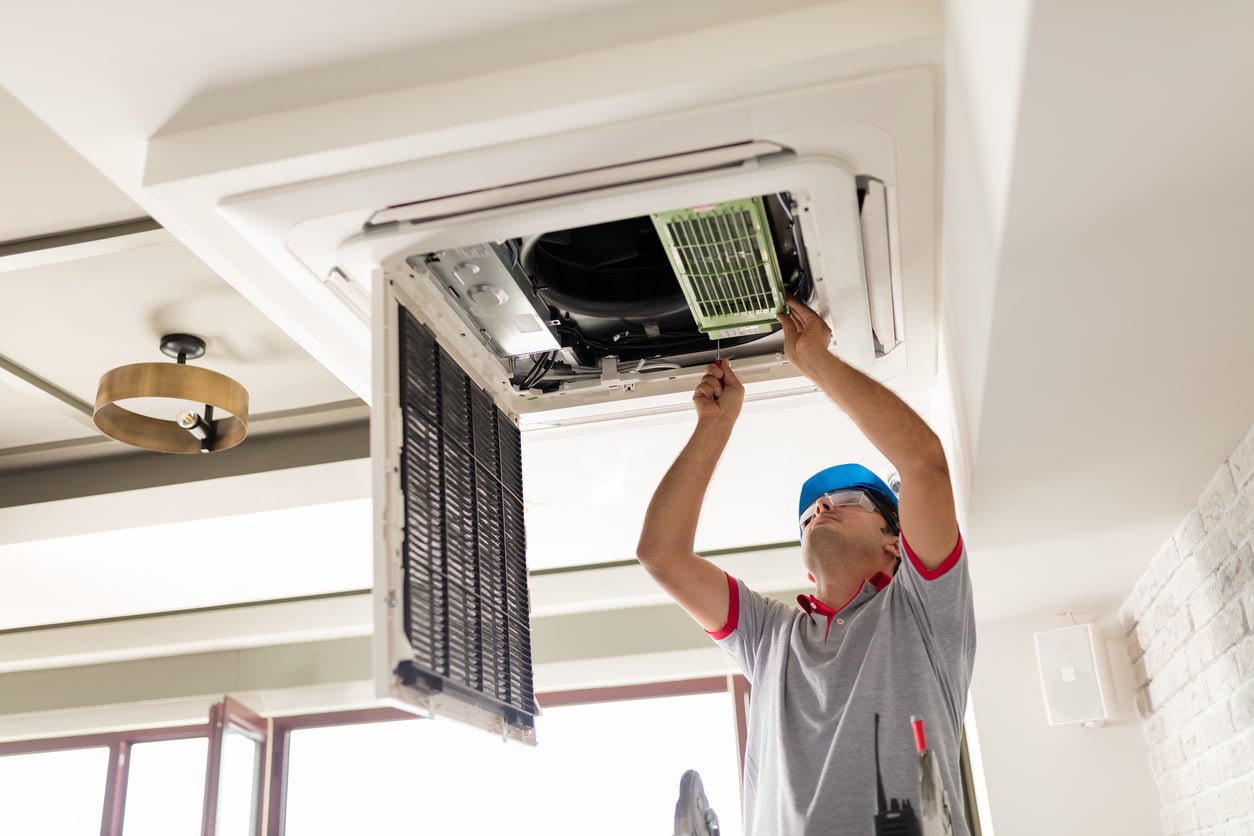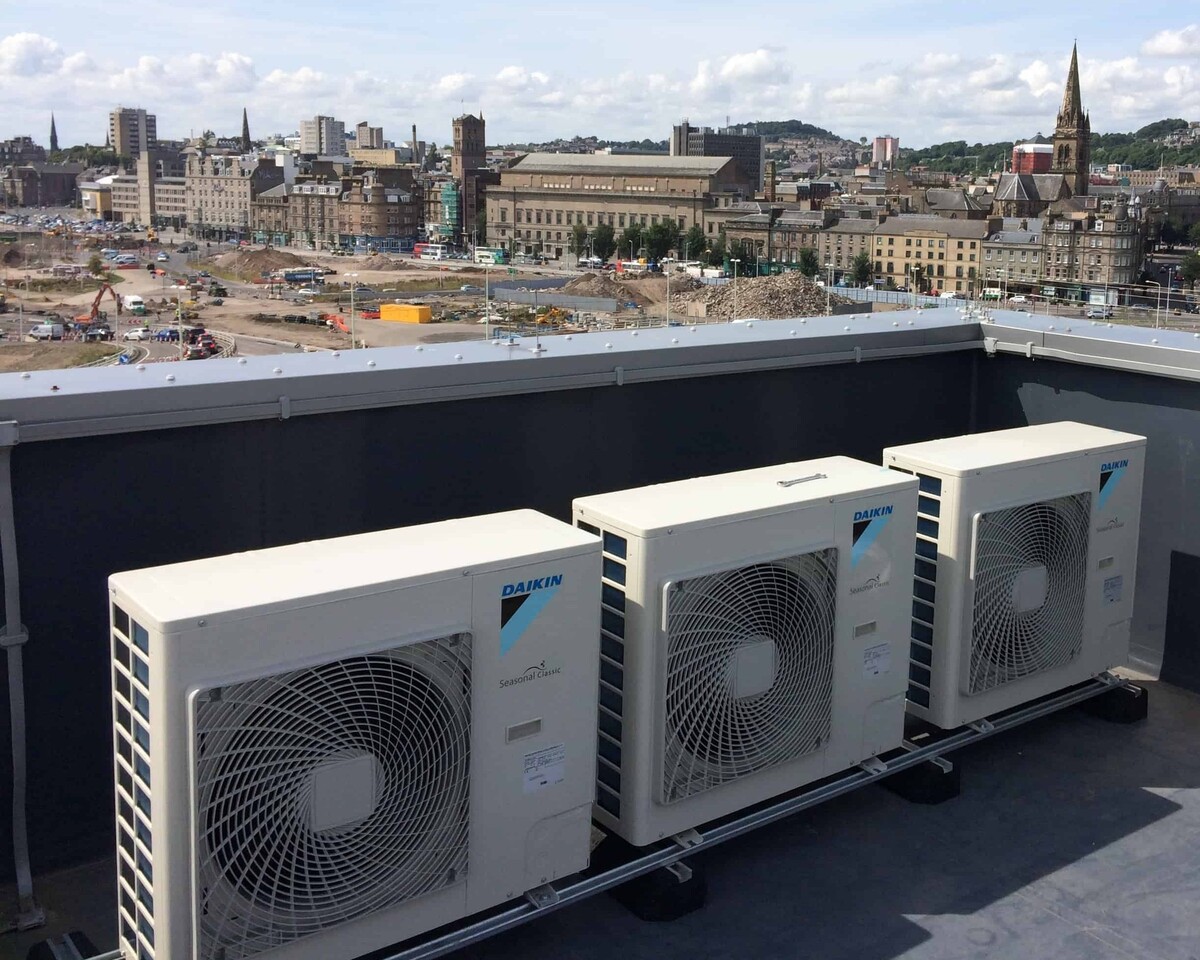Home>Home Maintenance>How To Perform Air Conditioning Service
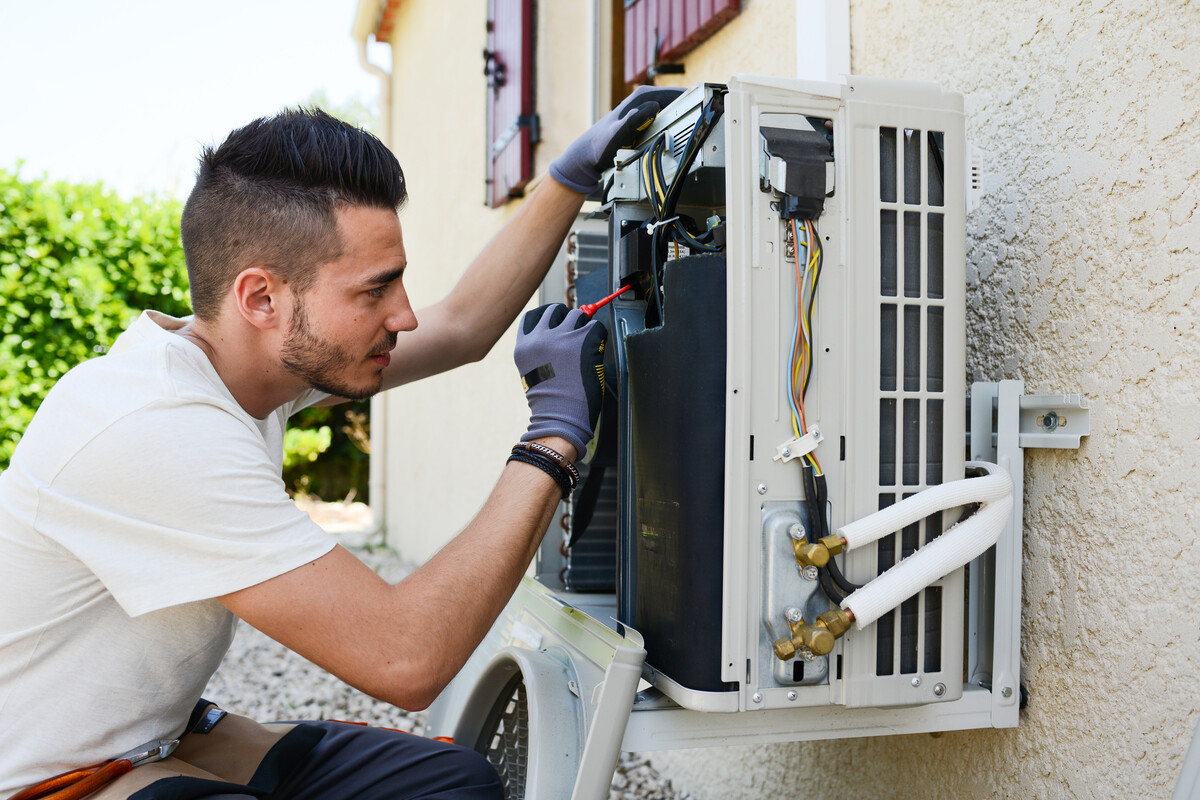

Home Maintenance
How To Perform Air Conditioning Service
Modified: March 6, 2024
Learn how to perform air conditioning service at home with our expert home maintenance tips and tricks. Keep your AC running smoothly and efficiently.
(Many of the links in this article redirect to a specific reviewed product. Your purchase of these products through affiliate links helps to generate commission for Storables.com, at no extra cost. Learn more)
Introduction
Welcome to the ultimate guide on how to perform air conditioning service. Regular maintenance of your air conditioning unit is crucial to ensure its efficient operation and longevity. By following a few simple steps, you can keep your AC running smoothly and avoid costly repairs in the future.
Proper maintenance not only helps in improving the performance of your air conditioner but also ensures the quality of the indoor air you breathe. Over time, dust, dirt, and debris can accumulate in your AC unit, reducing its efficiency and causing potential health hazards. By performing regular service, you can keep your home cool, comfortable, and safe.
In this article, we will walk you through the step-by-step process of servicing your air conditioning unit. From gathering the necessary tools and equipment to conducting thorough inspections and performing essential maintenance tasks, we will cover everything you need to know to keep your AC in top-notch condition.
Remember, if you are not comfortable performing these tasks yourself, it is always a good idea to hire a professional HVAC technician. They have the knowledge and experience to handle complex AC maintenance and can ensure that your unit is in optimal working condition.
Now, let’s dive into the first step: gathering the necessary tools and equipment.
Key Takeaways:
- Regular air conditioning service involves cleaning, inspecting, and testing various components to ensure efficient operation and longevity of the unit.
- Safety precautions, proper tools, and regular maintenance can help keep your air conditioning system in top-notch condition, providing cool and comfortable indoor air.
Read more: How Much Is Air Conditioning Service
Step 1: Gathering the necessary tools and equipment
Before starting the air conditioning service, it is important to gather all the necessary tools and equipment. Having the right tools on hand will make the process easier and more efficient. Here are the essential items you will need:
- Screwdriver set: A set of both Phillips and flathead screwdrivers will be useful for removing screws and accessing various components of the air conditioning unit.
- Adjustable wrench: An adjustable wrench will come in handy for loosening or tightening nuts and bolts.
- Coil cleaner: This cleaning solution is specifically designed to remove dirt and debris from the condenser and evaporator coils.
- Soft brush or vacuum cleaner: A soft brush or a vacuum cleaner with a brush attachment can be used to clean the coils, vents, and air filters.
- Rags or towels: Keep a few rags or towels nearby to wipe away any excess moisture or cleaning solution.
- Gloves and safety goggles: Wearing gloves and safety goggles is essential to protect yourself from any chemicals or sharp edges during the service process.
- Replacement filters: It is a good idea to have a few spare air filters on hand so you can easily replace them when necessary.
- Fin comb: A fin comb is a handy tool for straightening any bent fins on the AC unit, which can improve airflow and efficiency.
Once you have gathered all the necessary tools and equipment, you will be prepared to move on to the next step of the air conditioning service process. Remember to always follow safety precautions and turn off the power supply before starting any maintenance tasks.
Now that you are equipped with the right tools, let’s move on to Step 2: safety precautions and preparations.
Step 2: Safety precautions and preparations
Ensuring your safety and the safety of your air conditioning unit is of utmost importance before starting any maintenance tasks. Here are some crucial safety precautions and preparations to keep in mind:
- Turn off the power: Before beginning any work on your air conditioner, make sure to turn off the power supply at the breaker panel or disconnect switch to prevent any electrical accidents.
- Allow the unit to cool down: If your air conditioner has been running, give it some time to cool down before you start working on it. The components can become hot and cause burns if touched immediately.
- Wear protective gear: Put on gloves and safety goggles to protect yourself from any chemicals, sharp edges, or debris that may be present during the service process.
- Clear the area: Remove any objects or obstacles around the air conditioning unit to provide easy access and prevent any accidents or damage during the service.
- Read the manufacturer’s instructions: Familiarize yourself with the manufacturer’s instructions and safety guidelines for your specific model of air conditioner. This will ensure that you follow the correct procedures and avoid any unnecessary mistakes.
- Take note of any warnings or cautionary labels: Pay attention to any labels or warnings on the unit that may indicate specific safety precautions or potential hazards.
- Have a first aid kit nearby: Accidents can happen, so it’s important to have a well-stocked first aid kit readily available in case of any injuries.
By taking these safety precautions and making the necessary preparations, you will create a safe environment for servicing your air conditioning unit. Now, we can move on to the next step: cleaning the air conditioning unit.
Step 3: Cleaning the air conditioning unit
Cleaning your air conditioning unit is an essential part of regular maintenance. Over time, dirt, dust, and debris can accumulate on the unit’s exterior, obstructing airflow and reducing its efficiency. Follow these steps to effectively clean your air conditioner:
- Start by turning off the power supply to the unit. This ensures your safety during the cleaning process.
- Using a soft brush or a vacuum cleaner with a brush attachment, gently remove any dust or debris from the exterior of the unit. Pay special attention to the fins and vents as they are prone to collecting dirt.
- If your air conditioner has removable panels or grills, carefully remove them and set them aside.
- Inspect the interior of the unit for any signs of dirt or debris. Use a soft brush or a vacuum cleaner to remove any buildup.
- For more stubborn dirt or debris, you can use a mixture of mild detergent and water. Dampen a cloth with the mixture and gently wipe down the interior surfaces of the unit.
- Make sure to clean the condensate drain as well. A clogged drain can cause water leakage and other issues. Use a small brush or a pipe cleaner to clear any blockages in the drain.
- After cleaning, reassemble any removed panels or grills.
Remember not to use excessive water or cleaning solutions as they can damage the internal components of the air conditioning unit. It is also important to avoid bending or damaging the fins during the cleaning process, as this can impact the airflow.
Cleaning the air conditioning unit on a regular basis will help maintain its efficiency and prevent any potential issues caused by dirt and debris buildup. Now, let’s move on to Step 4: inspecting and replacing air filters.
Step 4: Inspecting and replacing air filters
Regularly inspecting and replacing the air filters in your air conditioning unit is crucial for its optimal performance. Air filters play a vital role in trapping dust, pollen, and other airborne particles, preventing them from entering your home. Follow these steps to inspect and replace your air filters:
- Start by turning off the power supply to the unit for safety.
- Locate the air filter compartment, which is typically located near the return air duct or in the blower compartment of the unit. Consult your air conditioner’s manual if you’re unsure of its location.
- Open the compartment and remove the existing air filter. Take note of its size and type, as you will need this information when purchasing a replacement.
- Inspect the air filter for any signs of dirt, dust, or damage. If the filter appears clogged or dirty, it’s time for a replacement. A general rule of thumb is to replace the filter every 1-3 months, depending on usage and environmental conditions.
- Purchase a new air filter of the same size and type. There are various types of air filters available, including fiberglass, pleated, and electrostatic filters. Choose one that fits your specific needs and budget.
- Insert the new filter into the compartment, following the manufacturer’s instructions for proper placement and orientation.
- Securely close the air filter compartment.
Replacing your air filters regularly ensures that your air conditioning unit runs efficiently and improves indoor air quality. It also helps prevent dust and debris from accumulating on the unit’s internal components, which can lead to reduced performance and potential damage over time.
Now that you’ve inspected and replaced the air filter, it’s time to move on to Step 5: checking and cleaning the condenser coils.
Step 5: Checking and cleaning the condenser coils
The condenser coils in your air conditioning unit play a critical role in expelling heat from the system. Over time, these coils can become dirty and covered in debris, hindering their ability to transfer heat effectively. Follow these steps to check and clean the condenser coils:
- Start by turning off the power supply to the unit.
- Locate the outdoor condenser unit, which houses the condenser coils. It is typically situated outside your home.
- Carefully remove any debris, such as leaves, grass, or dirt, from the surrounding area of the unit. This ensures unrestricted airflow.
- Inspect the condenser coils for any signs of dirt, dust, or debris buildup. If they appear clogged or dirty, they need to be cleaned.
- Using a soft brush or a vacuum cleaner with a brush attachment, gently clean the condenser coils. Start at the top and work your way down, removing any dirt and debris.
- If the coils are heavily soiled, you may need to use a coil cleaner. Refer to the manufacturer’s instructions for proper usage and dilution ratios.
- Rinse the coils with water to remove any remaining dirt or cleaning solution. Be cautious not to use excessive water pressure, as it may damage the coils.
Regularly cleaning the condenser coils helps maintain their efficiency and ensures proper heat transfer, resulting in improved cooling performance and energy efficiency. It is recommended to perform this task at least once a year, preferably before the start of the cooling season.
With the condenser coils now clean, we can proceed to Step 6: inspecting and cleaning the evaporator coils.
Step 6: Inspecting and cleaning the evaporator coils
The evaporator coils in your air conditioning unit are responsible for cooling the air as it passes through the system. Over time, these coils can become dirty and coated with dust, which reduces their efficiency and can lead to issues such as reduced cooling capacity and increased energy consumption. Follow these steps to inspect and clean the evaporator coils:
- Start by turning off the power supply to the unit.
- Locate the indoor air handler unit, which houses the evaporator coils. It is typically found in the attic, basement, or a dedicated utility room.
- Remove any access panels or covers from the air handler unit to expose the evaporator coils.
- Inspect the coils for any signs of dirt, dust, or debris buildup. Pay attention to areas where condensation may have accumulated, as this can promote mold and mildew growth.
- Using a soft brush or a vacuum cleaner with a brush attachment, carefully remove any loose dirt or dust from the coils. Be gentle to avoid damaging the delicate fins.
- If the coils are heavily soiled, you may need to use a coil cleaner specifically designed for evaporator coils. Follow the manufacturer’s instructions for proper usage and dilution ratios.
- Apply the coil cleaner to the coils, making sure to reach all areas. Allow the cleaner to stay on the coils for the recommended amount of time to dissolve any stubborn debris.
- Rinse the coils with water to flush out the loosened dirt and cleaning solution. Be careful not to use excessive water pressure, as it may bend or damage the fins.
- Once the coils are clean and thoroughly rinsed, ensure that they are completely dry before reassembling any access panels or covers.
Cleaning the evaporator coils on a regular basis helps maintain their efficiency, enhances cooling performance, and improves indoor air quality. It is advisable to perform this maintenance task at least once a year, preferably before the start of the cooling season.
Now that the evaporator coils are clean and free from debris, we can move on to Step 7: testing the air conditioning system.
Step 7: Testing the air conditioning system
Once you have finished cleaning the various components of your air conditioning unit, it’s important to test the system to ensure that everything is functioning properly. Follow these steps to effectively test your air conditioning system:
- Turn on the power supply to the air conditioning unit.
- Set your thermostat to a cool setting and lower the temperature a few degrees below the current room temperature.
- Listen for the air conditioning unit to start running. You should hear the fan and compressor turning on.
- Check the airflow from the vents. It should feel cool and consistent. If the airflow feels weak or limited, there may be a problem with the blower motor or ductwork that needs to be addressed.
- Observe the condenser unit outside. Ensure that the fan is spinning and that there are no strange noises or unusual vibrations.
- Monitor the temperature in the room over the course of several minutes. The air should gradually become cooler as the air conditioner operates.
- Check for any signs of water leakage or excessive moisture around the unit. Water leakage can be an indication of a clogged condensate drain or other issues.
- If you notice any issues or abnormalities during the testing process, it is recommended to contact a professional HVAC technician for further inspection and repairs.
By regularly testing your air conditioning system, you can promptly identify any potential problems and address them before they escalate. This step ensures that your unit is functioning optimally and providing efficient cooling for your home.
With the system properly tested, we can now move on to Step 8: checking refrigerant levels and refilling if necessary.
Regularly clean or replace the air filters in your air conditioning unit to ensure proper airflow and efficiency. This can help prevent breakdowns and improve air quality.
Step 8: Checking refrigerant levels and refilling if necessary
The refrigerant in your air conditioning system is responsible for absorbing heat from the indoor air and transferring it outside, resulting in cool air circulation. Insufficient refrigerant levels can lead to reduced cooling capacity and increased energy consumption. Follow these steps to check the refrigerant levels and refill if necessary:
- Turn off the power supply to the air conditioning unit for safety.
- Locate the service valves on the refrigerant lines. These valves are typically found on the outdoor condenser unit.
- Remove the valve caps and attach a manifold gauge set to the service valves. The gauge set allows you to measure the pressure and temperature of the refrigerant.
- Turn on the power supply to the unit and let it run for a few minutes to stabilize the system.
- Observe the readings on the manifold gauge set. The pressure and temperature should fall within the specified range for your specific air conditioning system.
- If the readings indicate low refrigerant levels, it is recommended to contact a professional HVAC technician to handle the refrigerant refill. Adding refrigerant requires specialized equipment and knowledge to ensure proper levels and avoid any potential damage.
- Avoid attempting to refill the refrigerant yourself, as it can be hazardous and may void any warranties or service agreements on your air conditioning unit.
- Regularly checking refrigerant levels and refilling if necessary will help maintain the efficiency and performance of your air conditioning system.
Keep in mind that refrigerant leaks can occur over time. If you notice a significant decrease in cooling performance, warm air blowing from the vents, or hissing noises near the refrigerant lines, it is crucial to seek professional help to identify and repair any leaks before refilling the refrigerant.
Now that you are aware of the importance of checking refrigerant levels, we can move on to Step 9: lubricating moving parts.
Step 9: Lubricating moving parts
Lubricating the moving parts of your air conditioning system is essential for proper operation and longevity. Over time, the components of your unit may experience friction, which can lead to wear and tear. By following these steps to lubricate the moving parts, you can ensure smooth and efficient performance:
- Turn off the power supply to the air conditioning unit for safety.
- Locate the moving parts that require lubrication. These typically include the fan motor bearings, blower motor bearings, and any other visible moving or rotating components.
- Carefully remove any protective covers or panels that may be obstructing access to the moving parts.
- Apply a few drops of lubricating oil, specifically designed for HVAC systems, to the designated points on the moving parts. Refer to your air conditioner’s manual for specific instructions regarding the type of lubricant to use and where to apply it.
- Use a soft brush or cloth to spread the lubricant evenly over the bearings or rotating parts. Be careful not to over-lubricate, as excessive oil can attract dust and debris.
- Once the lubrication is complete, replace any covers or panels that were removed.
Regularly lubricating the moving parts of your air conditioning system helps reduce friction, minimize wear and tear, and extend the lifespan of the components. It also ensures quiet operation and improves energy efficiency. It is generally recommended to lubricate the moving parts once a year or as recommended by the manufacturer.
With the moving parts properly lubricated, we can now move on to Step 10: inspecting and cleaning the blower motor and fan.
Step 10: Inspecting and cleaning the blower motor and fan
The blower motor and fan are crucial components of your air conditioning system, responsible for circulating cool air throughout your home. Regular inspection and cleaning of these parts can ensure their optimal performance and prevent any issues. Follow these steps to inspect and clean the blower motor and fan:
- Turn off the power supply to the air conditioning unit for safety.
- Locate the blower motor and fan, which are typically found inside the air handler unit.
- Remove any access panels or covers that may be blocking access to the blower motor and fan.
- Inspect the blower motor for any signs of dust, dirt, or debris accumulation. Use a soft brush or a vacuum cleaner with a brush attachment to gently remove any buildup.
- Check the fan blades for any visible dirt or debris. Wipe the blades clean using a soft cloth or brush.
- If the blower motor or fan blades are heavily soiled, you may need to clean them with a mild detergent and water solution. Be sure to follow the manufacturer’s guidelines for cleaning and avoid getting the motor or electrical components wet.
- Allow the blower motor and fan blades to dry completely before reassembling any access panels or covers.
Regularly inspecting and cleaning the blower motor and fan minimizes the risk of issues such as reduced airflow, inadequate cooling performance, and increased energy consumption. Aim to perform this maintenance task at least once a year, or more frequently if your unit is located in a dusty environment.
Now that the blower motor and fan are clean, we can move on to Step 11: checking and tightening electrical connections.
Step 11: Checking and tightening electrical connections
Ensuring that the electrical connections in your air conditioning system are secure is vital for safety and efficient operation. Over time, vibrations and regular usage can loosen electrical connections, leading to potential performance issues or electrical hazards. Follow these steps to check and tighten the electrical connections:
- Turn off the power supply to the air conditioning unit for safety.
- Locate the electrical panel or circuit breaker that controls the power to the unit.
- Inspect the electrical connections, including the wiring and terminals, for any signs of looseness, corrosion, or damage. Pay attention to the connections between the power supply, the unit’s main electrical box, and any interconnecting wires.
- If you notice any loose connections, use an appropriate size wrench or screwdriver to gently tighten them. Be careful not to overtighten, as this can cause damage.
- If you encounter any corroded or damaged connections, it is advisable to contact a licensed electrician or HVAC technician for professional repair and replacement.
- After tightening or addressing any electrical issues, turn on the power supply and test the unit to ensure proper functionality.
Regularly checking and tightening electrical connections helps prevent electrical arcing, short circuits, and other electrical hazards. It also ensures that power is supplied consistently to the air conditioning unit, optimizing its performance and reliability.
With the electrical connections checked and tightened, we can now move on to Step 12: adjusting and recalibrating thermostat settings.
Step 12: Adjusting and recalibrating thermostat settings
The thermostat is the control center of your air conditioning system, regulating the temperature and ensuring comfort in your home. Over time, the thermostat may require adjustments or recalibration to accurately reflect your desired temperature settings. Follow these steps to adjust and recalibrate your thermostat:
- Ensure that the power to the air conditioning unit is turned on.
- Locate your thermostat and remove the cover to access the controls.
- Check the thermostat’s temperature setting. If it is not set to your desired comfort level, adjust it accordingly.
- If your thermostat has a calibration option, follow the manufacturer’s instructions to recalibrate it. This process may involve adjusting the internal temperature sensor to better match the actual room temperature.
- Verify that the thermostat is correctly reading the temperature by comparing it to a separate, reliable thermometer placed nearby. If there is a discrepancy, consider recalibrating the thermostat further.
- Make sure that all thermostat wires and connections are secure. Loose or damaged wires can affect the accuracy of temperature readings and the functioning of your air conditioning system. If necessary, tighten or replace any problematic wiring.
- Replace the thermostat cover and ensure that it is securely fastened.
By adjusting and recalibrating your thermostat, you can optimize its performance and accuracy, ensuring that your air conditioning system operates according to your desired temperature settings. This step helps maintain consistent comfort in your home while also potentially reducing energy consumption.
With the thermostat settings adjusted and recalibrated, we can now move on to Step 13: final testing and some helpful system maintenance tips.
Step 13: Final testing and system maintenance tips
After completing the necessary maintenance tasks on your air conditioning system, it’s important to perform a final round of testing to ensure everything is in proper working order. Additionally, implementing regular system maintenance practices can help prolong the lifespan of your unit and optimize its performance. Follow these final testing and maintenance tips:
- Turn on the power supply to the air conditioning unit.
- Set your thermostat to your desired temperature and allow the system to run for some time, monitoring the airflow and cooling performance.
- Check for any unusual sounds, vibrations, or odors coming from the air conditioning unit. If you notice anything out of the ordinary, contact a professional technician to investigate and address the issue.
- Monitor the temperature and humidity levels in your home to ensure that the air conditioning system is maintaining a comfortable environment.
- Establish a regular maintenance schedule for your air conditioning system. This may include tasks such as replacing air filters every 1-3 months, cleaning coils annually, and scheduling professional maintenance inspections at least once a year.
- Keep the area around the outdoor condenser unit clear of debris, vegetation, and obstacles to ensure proper airflow and efficient operation.
- Consider installing a programmable thermostat for enhanced energy efficiency and customized temperature settings.
- Encourage proper airflow by keeping vents and registers clear of obstructions, such as furniture, curtains, or rugs.
- Monitor your energy consumption and utility bills to identify any significant changes that may indicate a problem with your air conditioning system.
- If you suspect any issues with your air conditioning system or you are unsure about any maintenance tasks, consult a professional HVAC technician for expert advice and assistance.
Implementing regular maintenance practices and testing your air conditioning system periodically can ensure its optimal performance, extend its lifespan, and provide you with cool and comfortable indoor air. By following these steps and tips, you can keep your air conditioning unit in great shape throughout the cooling season and beyond.
Congratulations! You have successfully completed the air conditioning service process. By following these steps and recommendations, you can enjoy a properly functioning and efficient air conditioning system for years to come.
Now, sit back, relax, and enjoy the cool comfort of your home!
Note: Remember to consult your air conditioning unit’s manual and follow any specific maintenance instructions provided by the manufacturer.
If you have any further questions or concerns about your air conditioning system, it’s always a good idea to consult a professional HVAC technician.
Thank you for reading and happy air conditioning maintenance!
Conclusion
Maintaining your air conditioning system is essential for optimal performance, energy efficiency, and longevity. By following the comprehensive steps and tips outlined in this guide, you can confidently perform air conditioning service and ensure the comfort and well-being of your home.
We started by gathering the necessary tools and equipment, emphasizing the importance of safety precautions and preparations. Through the process, we covered everything from cleaning the air conditioning unit, inspecting and replacing air filters, checking and cleaning the condenser and evaporator coils, testing the system, checking and refilling refrigerant levels if necessary, lubricating moving parts, inspecting and cleaning the blower motor and fan, checking and tightening electrical connections, adjusting and recalibrating thermostat settings, and concluding with final testing and system maintenance tips.
Regular maintenance of your air conditioning system not only improves its performance but also enhances indoor air quality and promotes energy efficiency. By establishing a maintenance routine and addressing any issues promptly, you can prevent costly repairs and ensure the longevity of your unit.
Remember, if you are uncomfortable performing any of these maintenance tasks or encounter complex issues, it is always recommended to seek professional assistance from a trained HVAC technician. They have the expertise and equipment necessary to address complex problems and ensure the safe and efficient operation of your air conditioning system.
With proper care and maintenance, your air conditioning system will continue to provide cool and comfortable air, creating a pleasant and enjoyable environment in your home.
Thank you for taking the time to read this comprehensive guide on how to perform air conditioning service. We hope this information has been helpful and that you feel confident in maintaining your air conditioning system for years to come.
Stay cool and enjoy the comfort of a well-maintained air conditioning system!
Frequently Asked Questions about How To Perform Air Conditioning Service
Was this page helpful?
At Storables.com, we guarantee accurate and reliable information. Our content, validated by Expert Board Contributors, is crafted following stringent Editorial Policies. We're committed to providing you with well-researched, expert-backed insights for all your informational needs.
